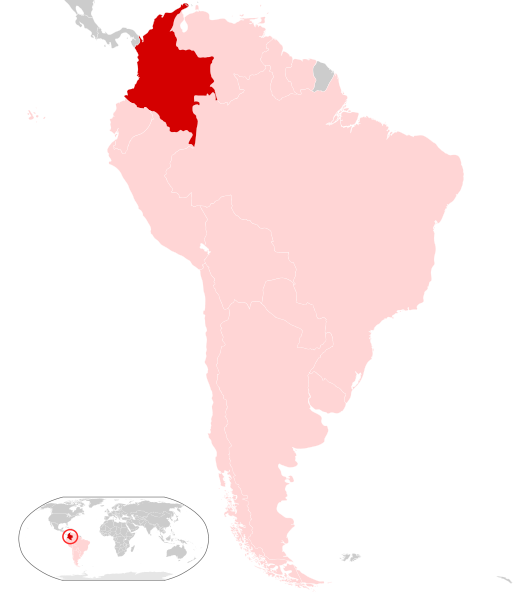NewsDesk @bactiman63
Cutaneous leishmaniasis
Through Epi Week 24 in Colombia, 1,860 cases of cutaneous leishmaniasis were reported, for a cumulative national incidence of 18.88 cases per 100,000 population at risk.
During this period, cases were predominant in men (71.88%) and people from rural areas (80.86%). The lesions were located to a greater extent in the lower limbs (43.87%), followed by upper limbs (43.71%), face (17.10%) and trunk (13.98%).

Image/Alvaro1984 18
The most affected age group was 20 to 29 years, which agrees with historical behavior. It is noteworthy that more than 70.0% of the cases correspond to people under 40 years of age, which agrees with the
different national and international reports that describe a greater affectation in population of productive age.
The incidence by territory, per 100,000population at risk, it was found above the 75th percentile in the departments of Guaviare, Santander, Putumayo, Caquetá, Antioquia, Vaupés and Boyacá.
Mucosal leishmaniasis
Through Epi Week 24 this year, 32 cases of mucosal leishmaniasis have been reported, for a cumulative national incidence of 0.33 cases per 100,000 population at risk.
The most affected mucosa was the nasal (78.13%), followed by the oral cavity (9.38%) and lips (6.25%).
The highest incidence (above the 75th percentile) occurs in the departments of Guaviare, Caquetá, Meta and Cesar.
Visceral leishmaniasis
In Colombia, historically, 47 municipalities have been identified (in 10 departments) and a district as foci of visceral leishmaniasis.
Through Epi Week 24, one case was reported in a 1 year-old, male from the municipality de Moñitos and who was notified by Bogotá D.C., who died and who had presented the clinical triad of fever, hepatosplenomegaly and pancytopenia.
Leishmaniasis is not a single disease, but a group of syndrome due to a variety of species of this parasite. They affect different populations and are related to a characteristic vector, the sandfly.
The disease can range from asymptomatic infections to those causing significant illness and death. Disease can appear on a spectrum from a single skin ulcer to destructive lesions of the face to terminal organ disease.

Leishmaniasis is found in 88 countries worldwide and is broken down between Old World and New World.
Old World leishmaniasis is primarily found in parts of Asia, East and North Africa, Southern Europe and the Middle East.
New World leishmaniasis occurs from northern Mexico to northern Argentina, with rare cases reported in parts of Texas and Oklahoma. In South America it is not found in Chile or Uruguay.
The vector for this parasite is a phlebotomine sandfly. There are a few different species implicated depending on the part of the world.
Sandflies are very small (about 1/3 the size of a mosquito) and make no noise when flying. There bites can sometimes be painless; because of these reasons, many people have no idea they were bitten.
Subscribe to Outbreak News TV
Even one bite of a sandfly can transmit disease, so travelers on short trips can still get infected.
When the female sandfly takes a blood meal it injects the parasite into the wound. Macrophages pick up the parasite and here they multiply until the cell bursts from overcrowding. The parasite goes on to infect more macrophages.
Some of these cells get carried to organs of the body including the liver, spleen and the bone marrow.
There are several species of Leishmania that cause disease in humans. The most common are Leishmania donovani (kala-azar), L. tropica (Baghdad boil), and L. braziliensis (espundia).
T-shirts, coffee mugs and other merchandise featuring the parasite Trypanosoma cruzi
To see the whole set of T. cruzi merchandise go to Chagas in Black and White
After getting bitten by a sandfly, disease may manifest itself from a week to many months later.
It starts out as a papule that enlarges to an ulcer. The ulcer can give the appearance of a volcano crater. Lesions may appear singly or multiple; many heal spontaneously within weeks to months to years.
Argentina reports 7 Saint Louis encephalitis cases in Buenos Aires and Entre Ríos
Certain species (L. braziliensis) can disseminate to the mucosal areas of the face and mouth and cause very destructive and disfiguring disease (espundia) that appears similar to leprosy.
Kala-azar, an Indian name given to systemic type of the disease due to the grayish appearance of the body, can result in enlarged spleen and liver, diarrhea, emaciation, weakness and death.
Mexico: Yucatan Peninsula accounts for nine out 10 cutaneous leishmaniasis cases

